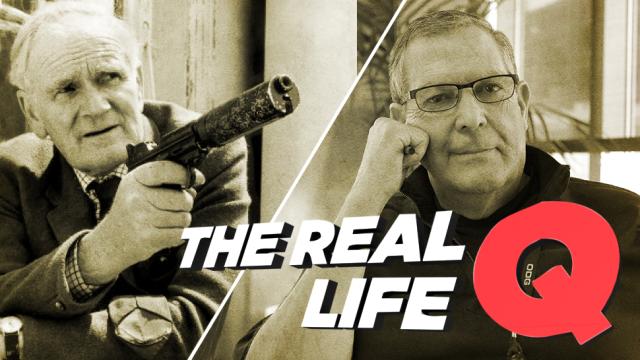I grew up watching James Bond films. My favourite part was always the same: the part where “Q” would outfit our hero with the latest in spy technology. Ralph Osterhout also grew up loving Bond movies too — but he took it to the next level. He spent his life building real spy gadgets, for secret agents in the field.
As a boy, Osterhout was so enamoured with Ian Fleming’s Bond novels that he decided to become a spy himself. He trained himself to shoot, drive, fight, even build his own weapons and gadgets. He studied the Bond films and, at the age of 22, built his own miniature submarine like the ones in the Bond classic Thunderball. He started a company building high-tech dive gear, and traveled around Europe to visit the exotic Bond locales he’d read about. “I stayed at the same hotels, went to the same restaurants and villages, smoked John Player No. 10 cigarettes,” he once told Wired.
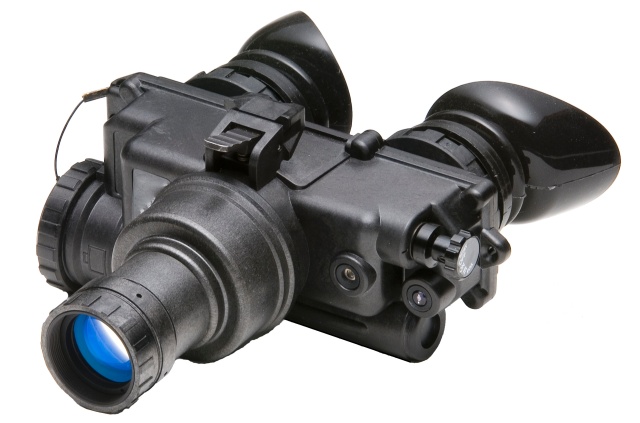
PVS-7 night vision goggles.
That’s roughly when the US government came calling. They needed Bond-grade gear for their elite Navy SEAL divers. Soon, Osterhout was a military contractor who trained with SEALs in his spare time. He built closed-circuit rebreathers and thermal protection systems, which could let divers target Soviet nuclear submarines — in freezing waters, no less — without being spotted. Later, he designed the standard-issue PVS-7 night vision goggles used in Desert Storm, and later Afghanistan and Iraq. And yes, his dive vehicles eventually featured in two Bond films: Never Say Never Again, and The Spy Who Loved Me.
Osterhout’s love of gadgets extends beyond the theatre of war. He invented some of the most popular toys of the ’90s, including the Yak Bak, the TalkBoy F/X+ and the gadget-filled Power Penz. But after the dot-com crash he went back to building more secretive tech again.
When I catch up with Osterhout at his Osterhout Design Group in San Francisco, he tells me frankly that he won’t be able to talk about all of the spy gadgets he’s invented. “The most exciting and intriguing ones, frankly, would make me a target,” he says. But as I ask him about how he found himself building spy gear, and how the counterintelligence business has changed over the years, he lets a few things slip.

Gizmodo: How did you get started?
RH: I think I read all the Ian Fleming novels when I was probably 12 or 13 years old. I thought “I’d like to do that.” Just imagine if you had those kind of skills. So I set about making myself an expert in a multiplicity of weapons, martial arts, driving skills, you name it. From racing cars to motorcycles to making weapons to becoming an accomplished gunsmith.
But how?
If you want to know to become an expert in something, you go find someone who’s the best of the best. It’s not illegal or immoral to be friendly. If you’re honest and open and say “Look, I think what you do is fascinating, but I’m dumb as a post and I’d love to know more about it,” most people who are highly accomplished in more sensitive things will basically shoo you away — until they realise that you’re friendly and relentless and deeply interested in becoming skilled. The Achilles’ heel of most highly skilled people is that, as they get older, they like to find a younger reflection of themselves.
I knew that and identified it early on, and associated myself with world-class gunsmiths and martial artists and people who were highly skilled in shooting and all those things, and became virtually accomplished in all those things without anybody knowing. It wasn’t for anybody else and it wasn’t for show.
How did you get noticed?
In the diving industry, when I was very young, I got recognised for having an inventive skill and capability that was very different from anybody else. I built underwater vehicles, anti-shark weaponry, digital instrumentation, miniature underwater breathing systems. Could I take a big regulator that looks like a hubcap in front of your mouth and miniaturise it, let you breathe easier too?
People used to blow sharks apart with shotgun shells and all this kind of stuff underwater, and they would kill a shark — no question about it. But high-amplitude, low-frequency concussions underwater — it’s like ringing the dinner bell for more sharks. You kill a shark, but you get more. And then things don’t go so well. So I designed shark darts.
You use a CO2 cartridge or fill a weapon with your scuba tank, you stick a shark, and it depresses a valve that ruptures the CO2 cartridge, injects high pressure from the cartridge inside the shark, which ruptures the heart and internal organs of the shark and causes them to die internally. The sudden expansion of gas also makes them unstable so they can’t attack you, but there’s no sound, and there’s no blood in the water. It was very effective.

Farallon Industries was Osterhout’s first company. He was known as Ralph Shamlian at the time. Farallon was known for these diver propulsion vehicles (DPV) and shark darts. His later aquatics company, Tekna, was famous for its dive knife.
Tell me about the first time the US government got in touch. What was that like?
A… secure group in the Pentagon got a hold of me through a friend and asked if I’d like to come talk about doing military work. I had no interest. I said I wasn’t a defence contractor and didn’t have the patience for tons of paperwork and bureaucracy. They said, “Why don’t you just come and see us and if you don’t find what we have to say appealing, we’ll pay for your trip.”
So I went to the Pentagon. I walked into a room with two people, one of them an older guy who was very bright and extraordinarily influential with all branches of DOD. He asked me what I thought of the SEAL teams’ equipment at the time. I said it was old, heavy, inefficient and I kind of went on a little personal rant.
He said, “Well, how would you like to do something about it?” I said, “Look, you’ve got the wrong guy. I’m not a defence contractor, I don’t know contracts, don’t have the patience for them, I hate bureaucracy.” He said “What if you just came up with the solutions and we assigned people to handle all the contracts, and you just write a page or two? You just give me a page or two, and if we find something we want to do, we’ll pay you.” I told myself I’ll believe it when I see it.
I got a call a couple days later asking for my first ideas. I rattled off some ideas, and they went for it. I got my first black contract for about seven million dollars. Oh boy. I was off to the races.
What was most profound for me was being able to train with the operators. I was very physically fit at the time, and I ended up having basically unlimited access to training on any of the most difficult things they do. Live fire exercises, killhouses, anything.
I remember the first time they took me into an armoury and asked me if I could shoot. I said, “A little.” They asked me which guns, and I said I liked pretty much anything. They picked a number of pieces out, and took me into a room — a killhouse — with paper that comes down from the ceiling in big rolls. They project video against it of simulated terrorists holding people hostage, babies. They said, “Let’s see how you do.” They handed me a pistol with a suppressor on it — a P9S — and, still looking at them, I completely field-stripped the piece by feel. I put it all back together, jacked the slide, stuck a magazine in, and fired. It was a good day.
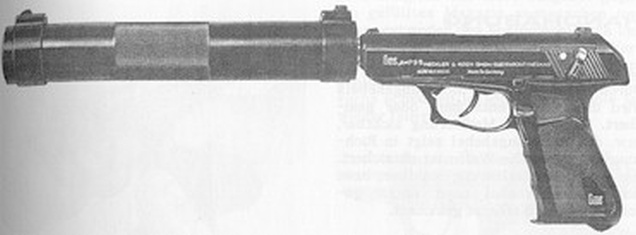
Heckler & Koch P9S with large 1970s suppressor.
They put me in another room and asked “How do you feel about live fire all around you?” They gave me earplugs and tossed some flash grenades in — about 240db, blind you for about 40 seconds — and then they came bursting in with live fire, hitting remote control targets behind me. They dumped 30-round magazines of live 9mm all around me. I sat there chuckling away the whole time.
I ended up getting a pass and was able to train with them all over, and in so doing ended up making, lifelong friends with SEAL team commanders and master chiefs and senior enlisted guys that eventually moved up through the ranks and became admirals, and I became a resource for them. I ended up becoming a tech advisor to the intelligence community. They’d say “We have a problem,” and ask me to fix it, or tell them what they should do.
How many of the solutions you came up with are public knowledge?
No so many. The most exciting and intriguing ones, frankly, would make me a target. The most interesting things you don’t know, and I can’t say anything about it nor who I did it for. It’s understood that when you work for that community, you don’t tell all.
Give me a hint?
How about a miniature transmitter, disguised in bird droppings. It splats against someone’s window. You know how birds come along and shit on your window, it’s sort of a whiteish, blackish, greyish mess and you see a little drip at the bottom? Imagine that drip is actually highly conductive silver paint. That long drip is actually the antenna, and in that gob is a very tiny transmitter with a tiny battery. A birdshit transducer was one of my favourites.
One of your favourite… gadgets you created?
That’s one of my favourites. We’ll leave it at that.
Imagine a pen that attaches to a lighter. It’s a real pen, but also a suppressed weapon. You fire it, and [he claps his hands together quietly] it sounds just like that, you hardly hear it. You could drop somebody across the table and no one would hear it. It fires a round that’s designed to be completely silent and nobody would know.
You know what a Cohiba cigar is? Imagine you could take the top off a Cohiba and inside is a tiny miniature cylindrical VTOL helicopter that’s got counter-rotating blades and miniature cameras for day/night vision. It’s absolutely silent and you can fly it through a room. You can launch it from the street, fly 500 feet high, for half a mile or more, and nobody can hear it or see it. It’s about the physical volume of half a hummingbird, and it’s absolutely real.

Three Cohiba cigars.
Or here, imagine a pen that looks just like a regular pen. I can write on my hand, I can write on my wrist, or I can even just write a message in the air, and very-high precision accelerometers, gyros, magnetometers are measuring my hand movements, creating the message and encrypting it with 256-bit AES encryption, and I press a button and I can send that wirelessly quite some distance away.
Say you’re in a very sensitive area and worried about being compromised, and they take you down and strip off your clothing, and now you’re just down to your underwear. Imagine I might have built something into the band of underwear that you can’t detect — you don’t feel any lumps or anything — that sends off a signal depending on what you do with your underwear, either “I’m ok” or “I’m not ok and need an extraction.” That signal travels fairly good distance.
How is real-life spying different than in the Bond films?
You don’t get good information from being at the country club and polo teams and hanging out and having a few splashes down at the yacht harbour. How do you get information from people? There are only five ways that I know of.
One is financial desperation. You find someone that’s in trouble financially. You can run credit checks on them, find out that somebody’s living above their means. You can compromise them financially because their wife or significant other is putting enormous pressure on ’em, or their children can’t go to good schools or whatever it may be.
Two is discovery of some criminal or immoral act. That’s a big one.
Bitterness in somebody because they have been passed over in an organisation, when they were the most qualified, but lacked the charm, the sophistication, the political savvy, or maybe their appearance or mannerisms were quirky. If they’re bitter about it, one can play upon that bitterness in a very gentle way — you don’t get it in 20 seconds, you need to build a relationship with people.
Loneliness. Some people are just lonely as hell and for some reason they don’t know how to make friends, and so you little by little make a friendship with them. And it can’t be a bullshit friendship, you have to end up communicating to them that you found something likeable about them, and in time they help you.
The last one is revenge against someone who did you wrong, who screwed you over, who said something in the organisation that was completely unfair, untrue, and you suffered by it.
You don’t go to a bar and someone drops a dime on you and you’ve got it all. I’ve done it: I’ve been places where someone made a careless error, got up, went to the bathroom and let me see something they shouldn’t have let me see on the corner of a desk… but those are unusual.
How has it changed over the years?
It used to be for example that you’d say, “How do you penetrate a facility?” And all the kind of things you did — you’d use water-cooled silent drills, drill holes from one wall to another, and you’d put a tiny pin transmitter and pickup through — all of that has changed. It’s not that it doesn’t happen anymore, but everyone’s conscious about eavesdropping. What’s really important now is how you find stuff in plain sight, and what does it mean. Who am I looking at? What am I seeing that most people may not recognise as being significant?
Don’t think of spies like in the old day where you have little bugs and transmitters, that shit’s as easy as can be. The really tough stuff is how do you do things in plain sight.
Obviously you can recognise someone’s face: facial recognition is a no-brainer. Gait recognition is another one: some people pitch forward slightly when they walk, one leg is not as strong as the other and there’s a certain pattern to your walk most people don’t think about. Iris recognition: I either have to get really close or have optics that let me get close enough to actively illuminate your iris, and grab what’s called a salient frame, a picture that can characterise the unique shape of the muscles of your iris.
Where do the gadgets come in?
Headworn devices are going to sweep over our lives like a tidal wave. Nobody can stop it. Every day on the internet you’re watching people get shot. Do you remember The Matrix, when the bullet’s going slowly through the air and the guy just moves his head? What happens when somebody shoots and police or security can see the path of the bullet in the air? Imagine you see a red streak literally from where the bullet came from. That will change everything.
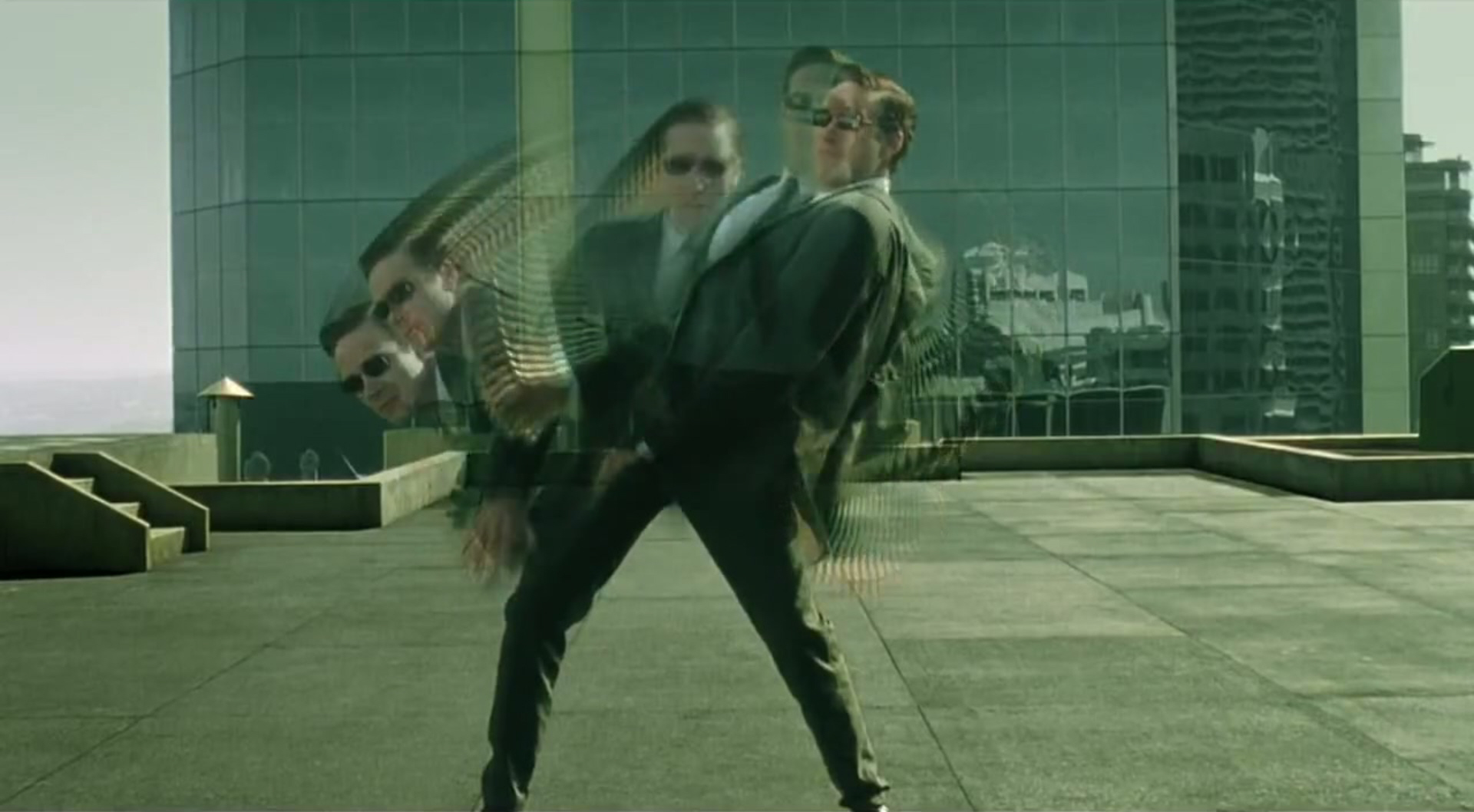
Is there enough time to react to something like that?
You can’t react to get out of the way of the bullet, that’s impossible, but you can know where it came from. You understand where the threat is. You’ll have people like those two brothers [in the Boston Marathon bombing] who were handling explosives. What happens when the authorities can detect the presence of explosives without touching anybody? You can literally see residue on someone if your glasses emit a dozen different wavelengths of microlasers that illuminate clothing in real time and give off a signature of what was absorbed or reflected. In microseconds it can look them up in a microtable and tell you if it’s gunpower or ammonium nitrate or Semtex or whatever.
Imagine you have a pair of glasses, and you can just look at a building 50 feet away, 100 feet away, and look right through the building and see someone moving around. You can’t see who it is, but you can see their heart contracting, their chest heaving. What you see is a representation, a signature of a person’s lungs and heart expanding and contracting. Now you can see where people are. You’re not invading privacy because you don’t know who they are. But when someone’s engaged in a standoff with authorities, you can say “I know where you are, I can see exactly where you are, and if you don’t stop we’re going to take you out.”
Isn’t it better for the guy to know his options are to have a bullet put through him, or give up peacefully now?
And you’re developing technologies like this?
I’m telling you about different kinds of things that are under development. We’ll leave it at that.
Why’d you stop making toys?
When you’re an independent toy developer, the best of the best, you come up with maybe 200 ideas a year. You show the best of those, maybe ten of them, to toy companies, and if you get one or two of them placed a year, you’re in heaven. When I was on a run and things were going grand, my hit ratio was insane. It was crazy, I’d go in and show 10 ideas, they’d take 8 of them, and I’d get advances and royalties. It was fabulous. But the second half of 2000 hit like a sledgehammer when the dot-com era collapsed overnight. The easiest way to cut costs was to cut out the independent toy developers, to just take what they had and buff it up. By the end of 2000, I couldn’t get a deal done.
Fortunately for me, people I knew in the military stepped forward with a problem and said, “Could you take a look at this?” And I won a contact that generated 700 million in revenue over a number of years. That got me back into the military game. I sold my company to a large defence contractor, came back to San Francisco, and made a decision that I was going to push hard at something I really wanted to do, and that was take headworn devices to the next level.
The next level?
Everybody thinks the modern soldier is like in Enemy of the State: people can see what you’re doing on the ground, and with transmitters the size of a walnut in your pocket you can communicate with space. Bullshit. The fact of the matter is if you go out in the field, a commanding officer tells his platoon leaders what to do, platoon leaders tell the team leaders what to do, who tell the individual shooters “we’re going to go over there, we’re going to shoot those arseholes if they do this or try to bomb us or do whatever.”
The fact is the average soldier doesn’t know where the fuck he is, he doesn’t really know who the threat is. He’s told to go here, be prepared, watch out, and if we take fire, return it — but don’t fire unless you’re authorised. That’s changing.
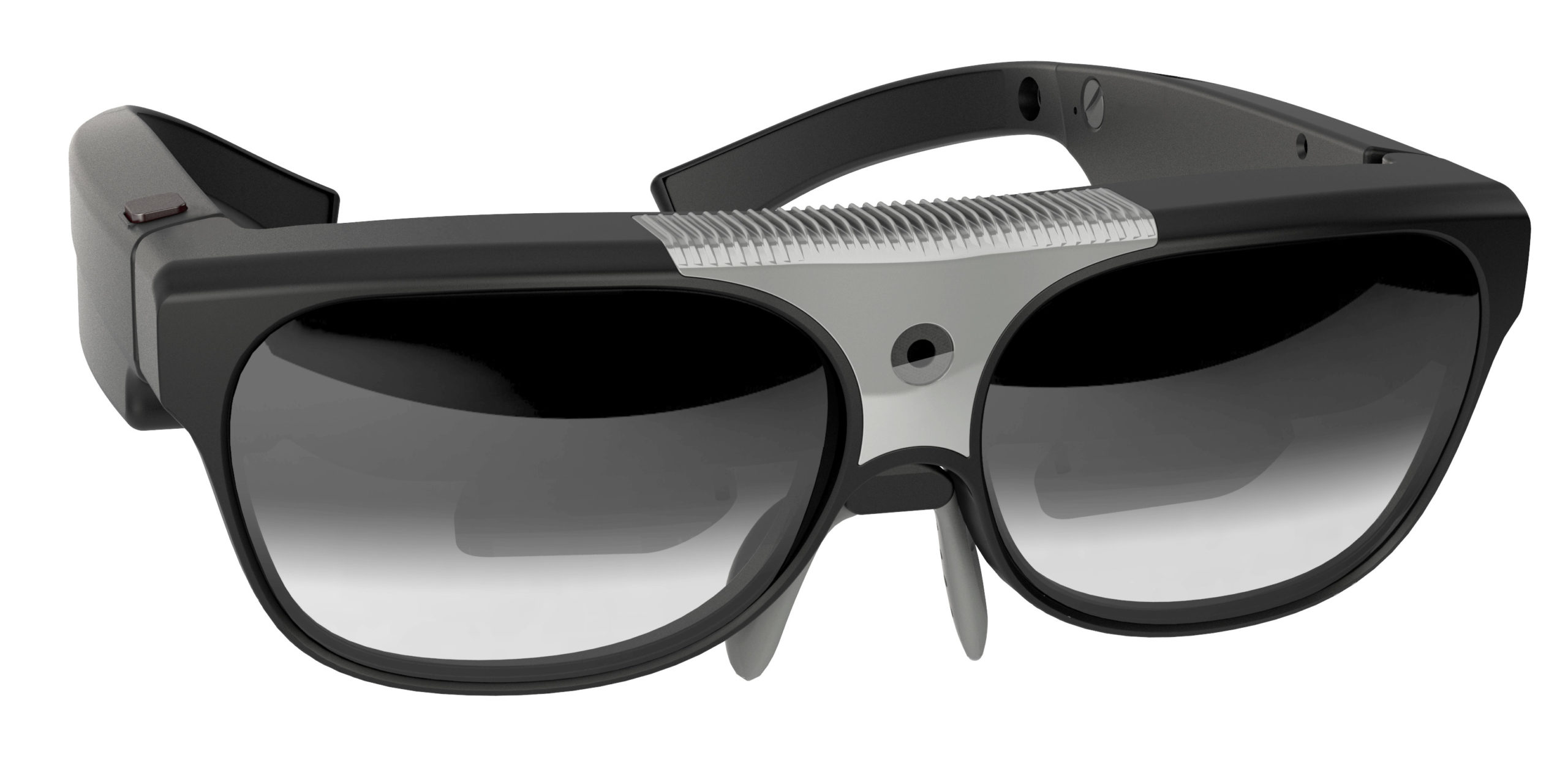
The ODG Smart Glasses, an augmented reality device. Osterhout is already shipping thousands of prototypes to government agencies.
The reality, ultimately, is that every soldier will end up with a headworn device on them that will know where he is, where he’s looking, anywhere in the world, with a circular error of probability of less than a meter. He’s going to know in twice the thickness of his own body where he is. He’s going to know where he’s looking, anywhere in the world, within half a degree. And if his glasses can look through sunglasses, look through clothing and see that a guy’s carrying a bomber belt before he gets within explosive distance… those sorts of things save lives.
It’s not about invasion of privacy. It’s really not about that, it’s about being safe. Just like everybody had to compromise in London, and in New York where there are now cameras everywhere. It’s not like Person of Interest. I love to watch it but it’s not true. They don’t care if you’re masturbating uncontrollably under a New York Times at a bus stop, the government’s not interested. You couldn’t even process all the data. It’s not about compromising privacy, it’s really about how the hell do we protect perfectly innocent people from people who are sociopaths, who know what’s right and wrong but don’t happen to care, and who have an illusion that they’re going to be fine if they just blow people up.
This interview was edited for brevity and clarity.
Pictures: Calibre Sales, HKPro.com, Soonadracula
